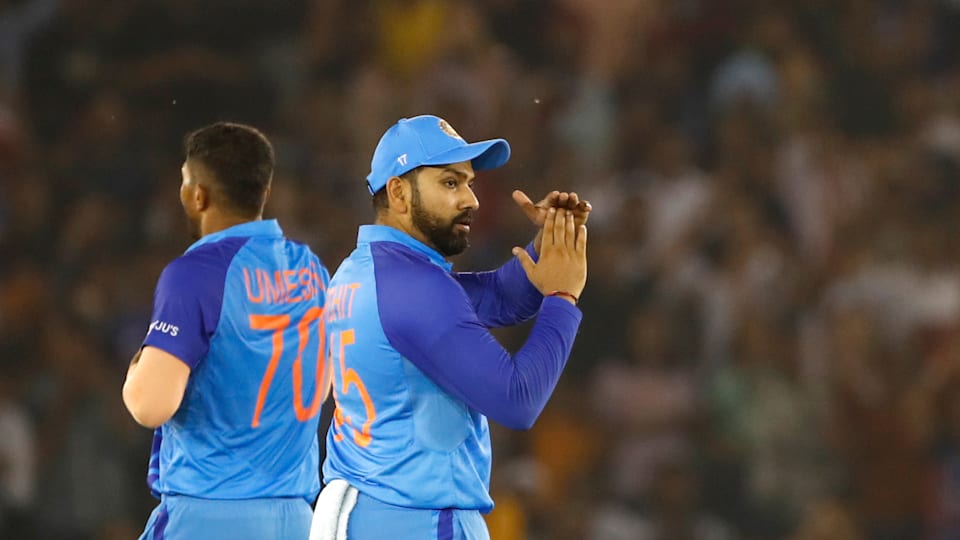
Umpires play the most crucial role in ensuring a smooth and controversy-free running of a cricket match, yet their human fallibility always leaves scope for errors. To ensure such mistakes don’t have an impact on the game, the Decision Review System (DRS) comes into play.
DRS in cricket is a technology-based system that helps players to request reviews of the on-field decisions made by umpires.
On-field batters or fielding teams can opt for DRS for LBW or caught mode of dismissals if they feel they have been hard done by a wrong call. However, only ‘out’ or ‘not out’ decisions can be reviewed in international cricket unlike the Indian Premier League, where players can also review wide balls.
The on-field umpires can also take the help of the DRS to decide on an inconclusive catch or a runout. In such cases, the third umpire helps in making a decision
Types of DRS
A DRS is of two types: an umpire review or a player review.
The on-field umpires possess the authority to refer certain decisions to the third umpire, such as run-outs, stumpings, bowled, hit wickets, fair catches, bump balls or boundary checks. This referral occurs when the on-field umpire signals by making a TV screen shape with their hands. This is an ‘umpire review’ and there are no limitations on how many umpire reviews can be taken in a match.
Player DRS, on the other hand, is a request to review an on-field umpire's decision regarding a dismissal, except in the case of 'timed out.' A player review cannot be taken if the teams exhaust the limit of unsuccessful reviews.
In the 2023 ODI World Cup, two unsuccessful reviews were allowed to teams per innings.
Only specific decisions, primarily those related to the caught or LBW, are eligible for a player review. A player invokes the review request by making a 'T' sign with both forearms at head height within a 15-second window after the ball is bowled. The DRS timer starts the moment a ball has been completed i.e. when it’s not in play anymore.
The captain of the fielding team initiates a player review for a 'not out' decision, while the batsman involved in the dismissal can request a review for an 'out' decision. No external input from sources like the dressing room is permissible during this process.
Upon a valid player review request, the on-field umpire communicates this to the third umpire using a TV screen gesture. The consultation involves two-way radio communication between the third umpire and the on-field umpires to exchange information about the appeal, decision and relevant details.
During the consultation, if the third umpire can't decisively overturn or uphold the original decision due to inconclusive evidence, the on-field umpire's call stands. If the decision overturns the initial call, the on-field umpire indicates the reversal before confirming the outcome.
Tools in DRS
The Decision Review System ensures fairness in the sport with the use of cutting-edge technology. The DRS uses hi-tech tools for ball-tracking, ultra-motion cameras, sound sensors and thermal imaging.
In instances like LBW reviews, sophisticated ball-tracking technologies like Hawk Eye or Virtual Eye come into play. These systems analyse the ball's trajectory and its point of pitching to determine whether it would have hit the stumps, despite the batter's position.
For contentious LBW or caught-behind appeals, devices like the Snickometer or Ultra-Edge enter the fray. Equipped with highly sensitive sensors, they detect minute sounds generated when the ball interacts with the bat, pad or the batter. The third umpire interprets this data, examining if any audio spike aligns precisely before, during or after the ball's bat passage, utilising the precision of ultra-motion cameras.
Distinct from the other tools, Hot Spot operates on a different premise yet shares the objective of confirming the ball’s contact. This innovative system relies on Infrared imaging to scrutinise whether the ball made contact with the bat, pad, or any part of the batter.
History of DRS
The DRS has significantly transformed cricket since it was first used in 2008 during the India vs Sri Lanka Test match in Colombo. Indian opener Virender Sehwag became the first batter to be given out under the DRS system. Back then, it was called the Umpire Decision Review System (UDRS).
While Test cricket got the first taste of the DRS in 2008, the system was incorporated into ODI in 2011. The DRS was introduced in T20Is in 2017.
The DRS has come a long way with even domestic T20 leagues worldwide using the review system to ensure fair play.
